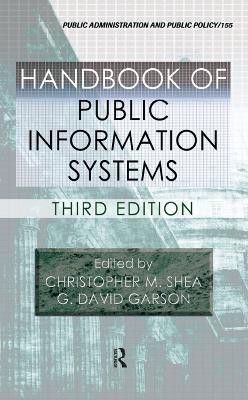Handbook of Public Information Systems(English, Hardcover, unknown)
Quick Overview
Product Price Comparison
Delivering IT projects on time and within budget, while maintaining privacy, security, and accountability, remains one of the major public challenges of our time. In the four short years since the publication of the second edition of the Handbook of Public Information Systems, the field of public information systems has continued to evolve. This evolution has elucidated many issues that public sector managers face as they wrestle with the information age. Completely revised and updated, the third edition addresses all aspects of public IT projects while emphasizing a common theme: Information technology initiatives are neither simple nor routine. These initiatives carry substantial implications for democratic values, policy development, strategic planning, and the mobilization of human capital. The third edition provides further insight into significant issues such as: Network governance Cross organizational integration and operability Enterprise architecture design, development, and management The impact of information technology on government service delivery With articles contributed by experts in the field, the coverage includes 21st century public information systems, modern IT needs, and the development of e-governments. The book examines the growth and use of information technology within and among government agencies and organizations. It examines current policy issues, offers case studies, and demonstrates successful public sector applications. Each section leads to a holistic approach that emphasizes communication, understanding, and participation from top management, technology teams, and end users. The more we learn about e-government and e-governance issues, the more it becomes apparent that the interrelationships between political environments, organizational environments, and technological capabilities are often difficult to summarize and predict. As the field advances, our understanding of the complexity of the relevant issues increases, and more guidance becomes available to administrators. This book puts you on the path to a better understanding of the issues and successful implementation of IT projects. Salient Features Provides current case studies and examples in the use of IT by government agencies in New York, Florida, the Washington D.C. area, Italy, and the UK Discusses the importance of network governance especially when systems are linked between different levels of government Demonstrates how IT can be used to bring government closer to its constituents Examines how to periodically review ITŌĆÖs role in the government entity, the questions to ask, and how to adjust that role Addresses policy issues including individual privacy, intellectual property, and direct democracy via networking Examines the application of IT systems for computer-based training, public finance management, and statistical analysis. ┬Ā


